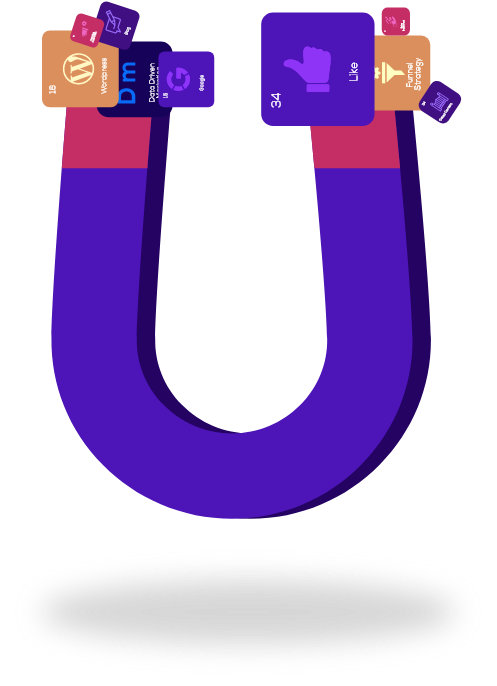Daze יוצרים משפכי שיווק שאי אפשר לעמוד בפניהם עבור קהלים נכנסים.
אף מסע לקוח אינו זהה, כך שאין שני משפכי שיווק דומים לעולם. מומחי השיווק הנכנס של Daze מנתחים את מסעות הלקוחות שלכם.ן ובונים משפכים אסטרטגיים המעבירים את המסר הנכון לכל שלב - ממודעות, לבחינה ופעולה.
קבלו יותר המרות ויותר לקוחות עם ניהול משפך אוטומטי ומאופטם, רק ב-Daze.
אני רוצה שתחברו אותי להאבספוט עכשיו!
שלחו לנו הודעה קצרה ותתחילו לראות קמפיינים שממריאים

מסע הלקוח שלכם.ן הוא ייחודי כמוכם.ן. נגדיר את זה מלמעלה למטה, ונפתח אסטרטגיות משפך שיווקי מלאות כדי להפוך לקוחות פוטנציאליים לרכישות.
המפתח ליצירת עניין הוא לדוור ללקוחות את המסר הנכון בזמן הנכון. תנו לנו לאתר את המסרים הטובים ביותר עבור כל שלב במשפך שלכם.ן.
נייעל את מסעות הלקוחות שלכם עם אוטומציה שיווקית של Hubspot. זהו הכלי האידיאלי לניהול, ניטור, יישור ואופטימיזציה של מחזור חיי המשפך השיווקי הייחודי שלכם.ן.
יש דרך בה כל אדם חייב ללכת כדי להפוך ללקוח שלכם.ן. ראשית, זה מתחיל במודעות. ואז, יש ניצוץ של עניין; הם רוצים לדעת יותר! ואז יש את הרגע שהם מחליטים לקנות, ולבסוף, הפעולה – הם לחצו, הם קנו, הם שילמו.
זה נשמע פשוט, אבל זה למעשה תהליך מורכב שדורש את המומחיות של Daze. אנחנו מגדירים, מנתחים ובונים משפכים שיווקיים שמייצרים מספיק עניין בכל שלב כדי לקדם את הלקוח במשפך עד שהוא ממיר.
בכל שלב, הידע שלנו בשיווק הנכנס עומד למבחן, עם טקטיקות ומסעות פרסום יצירתיים על מנת לגרום לתנועה הנכנסת שלכם.ן לנוע מהר יותר למקום אליו אתם.ן רוצים.ות שתגיע.
מכיוון שאין שני משפכים שיווק נכנסים זהים, גם הנכסים הדרושים להעברת תנועה במורד המשפך אינם זהים. עבור מותג אחד, נייר לבן מעמיק עם המון פרטים טכניים עשוי להיות הדרך להמרה. במקום אחר, הודעה בסגנון אישי בלינקדאין עשויה להיות המגע הנכון עבור לקוחות שרק הכירו אתכם.ן.
או אולי סמינר מקוון הוא הדרך הטובה ביותר לפתות לידים חמים ולהפוך אותם ללידים חמים. החוכמה היא להבין אילו מסרים ספציפיים אתם.ן צריכים.ות עבור כל חלק במסע, ולוודא שהמסר הנכון מיושר בשלב הנכון של המשפך.
צוות השיווק הנכנס של Daze הוא שילוב של "מדען קשוח", המבצע ניתוח נתונים קרים כדי לקבל את ההחלטה המושכלת ביותר, ו"קוסם", שגורם לכל החלקים להתאים זה לזה כדי ליצור מסע שובה לב שמשאיר את הלקוחות מרותקים.
העברת הודעות בזמן היא המטרה שלנו; לעשות את זה נכון זו התשוקה שלנו. אברה קדברה!
אוקיי, אז סידרנו את מסע הלקוחות שלכם, יצרנו מסרים נהדרים שמושכים לקוחות כמו מגנט, אבל איך לשמור על הכל בסדר שרצינו, ואיך לעבוד בצורה חלקה לאורך כל מחזור המשפך השיווקי? עם Hubspot, זה פשוט.
צוות Daze מורכב ממומחי Hubspot, עם מומחיות עמוקה בכלי האוטומציה השיווקית המועדפת בתעשייה, כך שנוכל לבנות, לבצע, ליישר, לעקוב ולבצע אופטימיזציה של מספר משפכי לקוחות בו-זמנית, תוך שמירה על אסטרטגיית השיווק הנכנס שלכם עם תובנות המגובות נתונים מלמעלה ועד למטה.
אנו עובדים עם שיטות העבודה המומלצות של התעשייה לטיפול בלידים לאורך הזרימה שלהם במשפך, כך שכל ליד נמדד ומעובד בצורה מדויקת. לאחר שהגדרנו באיזה שלב הלקוחות נמצאים באמצעות Hubspot, מעקב אחריהם מקרוב הוא נוח יותר ומאפשר לנו לבצע את המהלכים הבאים עבור אסטרטגיית השיווק שהגדרנו עבורכם.


"העבודה עם Daze אפשרה לנו להגדיל את דירוג החיפוש והנראות שלנו בקרב קהל היעד שלנו, באמצעות שילוב של קידום אתרים טכני, תוכן איכותי ומקצועי ואופטימיזציה של ממשק המשתמש באתר שלנו. גישה רב-פנים זו הממונפת על ידי צוות Daze לא רק הגדיל את החשיפה שלנו בחיפוש אורגני ושיפר את מעורבות הקוראים; הוא תורגם ללידים איכותיים ובסופו של דבר לחיזוק משמעותי במכירות".



"בנוסף לצמיחה בלידים איכותיים, המאמצים שהשקיעה Daze בחקירת שוק הנישה שלנו הובילו לרווחים בלתי צפויים. Cellwize השיקה את מסע הפרסום של גוגל אדוורדס כדי להניע תנועה ולייצר לידים רלוונטיים למכירות. דרך הערוצים שלנו השקענו בחיפוש עבודה בקנה מידה גדול של מהנדסים מומחים בינלאומיים. להפתעתנו, אחד מהגיוסים האחרונים שלנו בבריטניה היה למעשה תוצאה ישירה של מילת מפתח טכנית ששימשה במסע פרסום של AdWords – שלעולם לא היינו חושבים להשתמש בה כדי להגביר את המודעות. תודה."



"מלבד שזכינו במספר לא מבוטל של פגישות, התרשמנו מאוד מהשקיפות שניתנה לנו בכל שלב בקמפיין בלינקדאין. הייתה לנו נראות מלאה, עם דוחות חודשיים מעמיקים כדי שנוכל לעקוב אחר ההתקדמות ולהתאים את פעילויות השיווק שלנו לכנס בהתאם. Daze לא רק חיזק את המשפך השיווקי שלנו, אלא גם חיזק את הביטחון שלנו".

כשתצאו אל הדרך להשיג את המטרות השיווקיות שלכם, Daze Marketing ישרטטו לכם את מפת הדרכים בעולם הדיגיטלי. אנו נלווה אתכם בהתוויית אסטרטגיית שיווק באינטרנט מקיפה במטרה להשיג את היעדים שהוגדרו יחד מראש. ניצור עבורכם את תמהיל השיווק והפרסום הנכון והמנצח עבורך – ונהיה השותף שלכם לשיווק מוכוון תוצאות אונליין.

אם אתם רוצים את הלידים הגדולים, ABM היא הדרך להשיג אותם.
נצלו את הדגים הגדולים ותיהנו מהחגיגה עם שיווק מבוסס חשבון, שיטת שיווק B2B המזהה וממקדת רק את הלידים החשובים באמת.
נכון, ABM היא אסטרטגיה ארוכת טווח, אבל עם טקטיקות טירגוט של כוכבי-על של Daze, ארגז כלים מסיבי לניהול קמפיינים ומומחיות יוצאת דופן ביצירת משפך שיווקי, בקרוב תקצרו את הפירות הרבים שיש ל-ABM להציע.

יצירת לידים איכותיים היא האתגר המרכזי עבור חברות B2C וחברות B2B. במקרים רבים, זרם של לידים איכותיים הוא אחד מהמצרכים הנדירים אשר משפיע באופן ישיר על כמות המכירות, המחזור השנתי והצלחת החברה. לא כל מי שממלא טופס אצלכם באתר הוא ליד איכותי, ולא כל שיחת טלפון מובילה למכירה. כסוכנות לידים מקצועית, Daze Marketing, עוזרת לחברות B2B מתעשיות שונות ועסקי B2C להשיג לידים איכותיים ש”יבשילו” לכדי מכירה בזמן הקצר ביותר!

עודדו מודעות והמרות עם קמפיינים בתשלום מבוססי נתונים.
אסטרטגיית הפרסום בתשלום שלנו חורגת בהרבה מעבר להופעות וקליקים על פני השטח. אנחנו אלופים בפרסום B2B בלינקדאין, אבל למעשה אנחנו מכסים את כל רשתות המודעות בהן נמצאים הלקוחות שלכם.
קבלו גישה למומחיות האופטימיזציה של Daze, וגלו גישת PPC ממוקדת, מכוונת ומונעת תוצאות עבור מסע הלקוח במשפך השיווקי המלא.

Daze מספקת תוכן מקורי בערוצים שבהם גרים הלקוחות שלכם.
תוכן הוא הדבק שגורם לקהל היעד שלכם להיצמד למותג שלכם. תוכן יקר ערך שמתייחס לנקודות הכאב של הלקוחות הוא הדרך החזקה ביותר לבלוט באוקיינוס של אתרים, בלוגים ודפי מדיה חברתית.
צוות התוכן המומחה של Daze ימצא את הקול שלכם, וישמיע אותו בכל הערוצים שלכן.

כל מה שיש לשיווק דיגיטלי להציע, תחת קורת הגג של Daze.
מה שמניע את השיווק המסורתי – הכרת הקהל, הגדרת הצעת הערך שלכם, בחירת הערוצים הנכונים – גורם גם לשיווק דיגיטלי מוצלח, אבל עם הבדל אחד (עצום!): מדידה.
אנו נבנה את אסטרטגיית השיווק הדיגיטלי שלכם מהיסוד – מגילוי, קריאייטיב וביצוע, ועד למעקב, מדידה וכלי האופטימיזציה הכי מתקדמים שיש.

שלחו לנו כמה פרטים דרך הטופס ואחד המומחים.ות שלנו יצרו איתכם.ן קשר בהקדם
על ידי מסירת המידע שלך, אתה מסכים לאיסוף ושימוש במידע שלך בהתאם לתנאי השירות ומדיניות הפרטיות שלנו